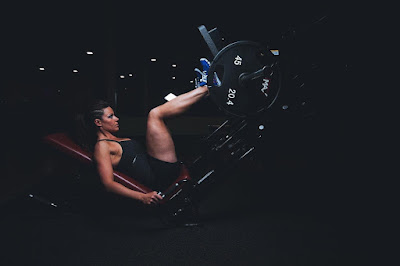Introduction to Running:
 |
| Running |
If you’re reading this, you already know that starting a running routine can be difficult, especially if you’re not used to exercise. However, it’s worth it! Running has been shown to reduce your risk of heart disease and type 2 diabetes, as well as increase your stamina and energy levels. If you’re not sure where to start or what to do when you get there, here are five easy ways to get yourself moving in the right direction.
What are the benefits of running?
 |
| Running |
Exercise is extremely important for losing weight and staying fit. But not all exercises are created equal. Studies have found that running can burn up to 600 calories an hour that’s more than twice as many calories as walking, which comes in at around 250 an hour. That means you could burn off an entire pound of fat in just three days if you run three hours a day without changing your diet. Running also has benefits that other exercises don't offer. When you exercise, your heart rate increases and so does the blood flow to your muscles.
The increased blood flow releases nitric oxide into the bloodstream, which relaxes the blood vessels near the surface of the skin, causing blood pressure to drop momentarily in effect making it easier for oxygen-rich blood to reach exercising muscles quickly.
The two best exercises (for your brain AND body)
Most people know that exercise has a positive effect on our physical health, but science is increasingly showing that it can boost mental performance, too. The two exercises shown to have one of the biggest impacts are running and weight lifting. Both aerobic activity and strength training have been linked to improvements in memory, problem-solving skills, attention span, and more. The reasons why these two forms of exercise make us smarter aren't totally clear, but scientists believe their findings may stem from increased blood flow to parts of your brain or an increase in feel good hormones like serotonin and dopamine.
Take the stairs:
Stair climbing is a great way to get in some cardio, but also strengthens your leg muscles, which can lead to less stress on your knees. Stair climbers often don’t feel as winded as they do after jogging or running and that might be because stair climbing uses more muscle groups throughout your body. If you live in an apartment or building with no access to stairs, check out Google Maps for different routes not only will you burn calories, but it will also help familiarize yourself with other parts of town and improve your sense of direction! Be aware: you’ll probably want to go lighter at first until you get used to running up and down flights of stairs.
Walking counts as exercise:
 |
| Running |
If you don’t already have an exercise routine, it can be intimidating to even think about starting. The truth is that there are many ways to get moving, and walking is a good place to start. While walking doesn’t provide as much of an intense workout as running or jogging, it helps keep your metabolism fired up, keeps your joints in great shape, and helps relieve stress. Plus, if you want something more challenging than just walking through your neighborhood each day. If you want a change of scenery you can opt for an evening stroll around downtown or hit up a local park. No matter what type of exercise you end up choosing, remember that getting active every day is one of best things you can do for your health!
Why timing matters when working out:
As you exercise, your body produces chemicals called endorphins that produce feelings of euphoria. Unfortunately, these are short-lived and typically last for about 10 minutes after you finish your workout. That means if you don't begin your workout in time to catch that post-workout buzz, all of your hard work will be for naught; no longer will it have been worth it. Remember: You have to get moving by at least 4:59 p.m., or else it's not worth doing any form of running and physical activity whatsoever (unless getting sweaty is one of your favorite activities). You might as well just lie around on the couch and enjoy the pleasantries of life.
Stretching running :
When you first start running, stretching your calves, hamstrings and groin will help ward off injury. It’s important to remember that not everyone should run. If you do decide to try running, start slow and then gradually increase your speed over time while also increasing how far you run each day. While in an upright position with both feet planted firmly on a flat surface, hold onto something for balance if necessary and slowly lean forward from your waist until you feel some tension in the back of one or both legs. Hold for about 30 seconds and repeat with opposite leg(s). You can also try rotating at hip joint(s) for same results. Next, stand up straight again but this time bend one knee in front of you as close to your stomach as possible and pull it towards your chest.
What are waiting foe yor?
If you really want to jump-start your fitness routine, one of the best things you can do is hire a professional. A personal trainer will push you in new ways, hold you accountable and help design a regimen that's specifically geared toward your goals and lifestyle. And if money is an issue, many gyms offer trial sessions or low-cost memberships for people who need some extra motivation to get going. Plus, trainers often offer tips and meal plans all with one goal in mind: getting you motivated so that you'll stick with it long after they've left town. Once they leave town. It's up to YOU! It doesn't matter if it's springtime; dust off those Nikes and hit the ground running.






1 Comments
Nice blog
ReplyDelete